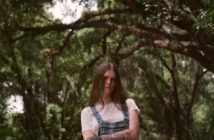Describing music or a purveyor of it as surreal isn’t always flattering. In the case that the approach falters, songs can sound odd and out of place, however when deliberate moves in more daring directions do work out, some of the most fantastic moments in musical history have appeared.
For an idea of such things, you need not look further than David Bowie. As was abundantly clear with his character-based work as Ziggy Stardust and Major Tom, there has always been some unknown and almost bizarre quality. His voice’s eerie screech carved a different dimension to transport you to his far-off land – the music video for ‘Ashes To Ashes’ will always stand out in my mind, with the outlandish clothing and colours backed by an amazingly dry and bouncy beat. The character even made a comeback in 2016’s farewell Blackstar, voted by The Edge’s writers as their favourite album of 2016.
Kate Bush, who returned in 2011 with 50 Words For Snow, was similarly reclusive – famously, she didn’t tour between 1979 and a 22-date residency at London’s Eventim Apollo in 2014. Looking back to that intermediary period reveals fantastical clouds of sound (‘Wuthering Heights,’ ‘The Big Sky,’ ‘Babooshka’) that show off a mix of different genres and some very niche subjects, realised impeccably with her stunning high-pitched vocals. Björk too became a staple throughout the 1990s, with a wide variety of hit singles experimenting beyond her early Icelandic punk project Tappi Tíkarrass. Whilst less surreal, per se, the superb ‘Iltí Ební’ has explosions of electric guitar and shouted and screamed vocals that later evolved into some of her most well-known works with The Sugarcubes and as a solo artist. It is a struggle to identify two songs as sounding similar – the iconic ‘It’s Oh So Quiet’ melds tones from her punk routes to the song’s big band origins with her unique voice; ‘Army Of Me’ crafting a mind-numbing combination of bass and synths to bring together an indescribable supernatural techno fusion.
The so-called art pop genre championed by the likes of Bowie and Björk (and revived more recently, at least in name, by Lady Gaga) has been utilised many times in the past. Just take a look at Grace Jones’ Island Life or Roxy Music’s Avalon, and this style is still popular in the present day – however the surreal doesn’t necessarily stick to this. German giants Kraftwerk deployed a unique business-like style, yet their trailblazing electronic sounds pulled them into the mainstream, and to this day Sonic Youth take these mystical notions into the heavier end of the rock spectrum.
One of the biggest draws to the surreal side of music is the wonder caused by their outlandish style – Grace Jones isn’t a good enough singer to have sold three platinum selling albums and, perhaps more controversially, it can easily be said that Bowie never had strong enough vocals for the superstardom he has received. Yet, his legacy stands true as proof that the most outlandish artists can, by combining aural artistry with a mastery of aesthetics and concepts, become revered as some of the greatest the world has ever seen.




